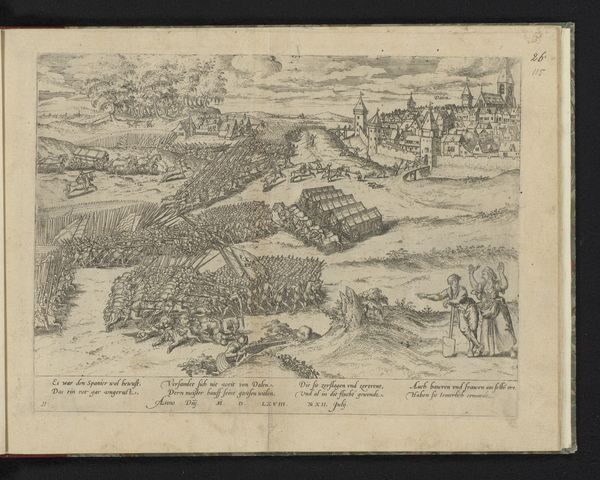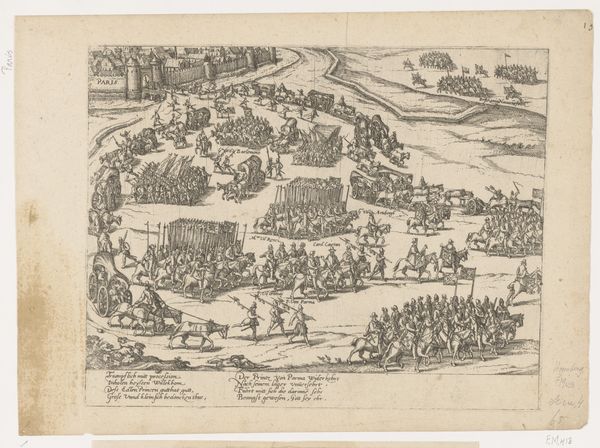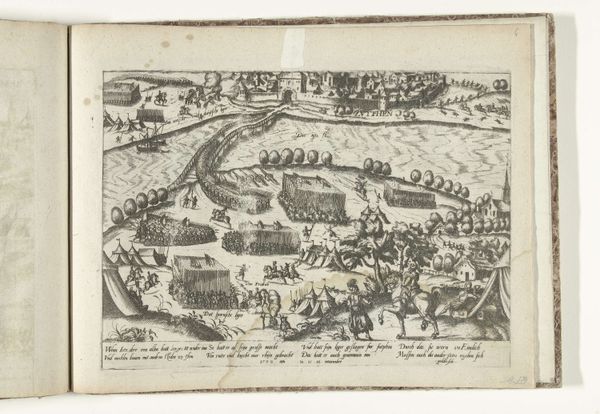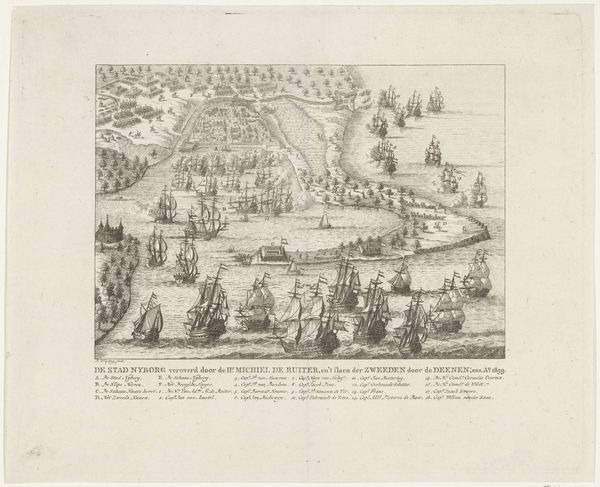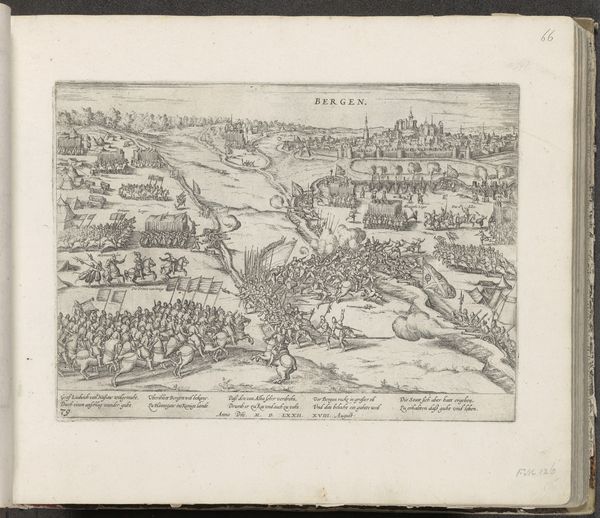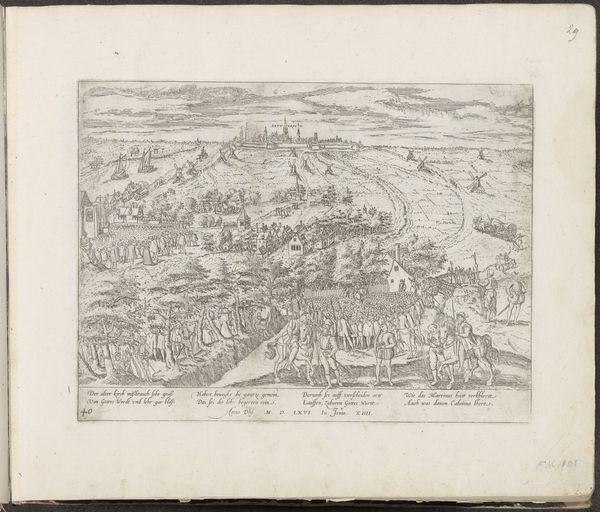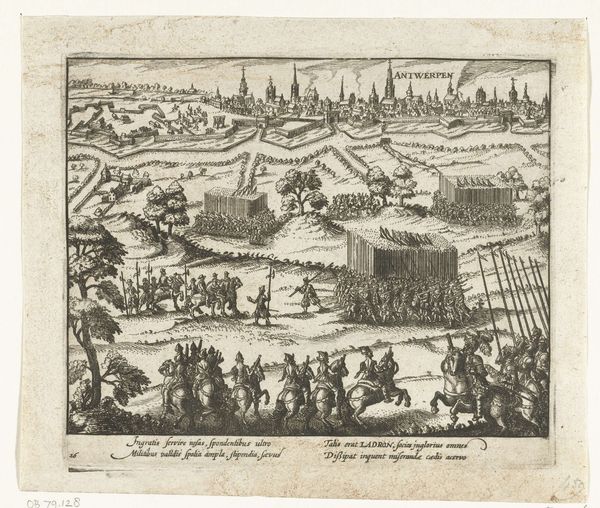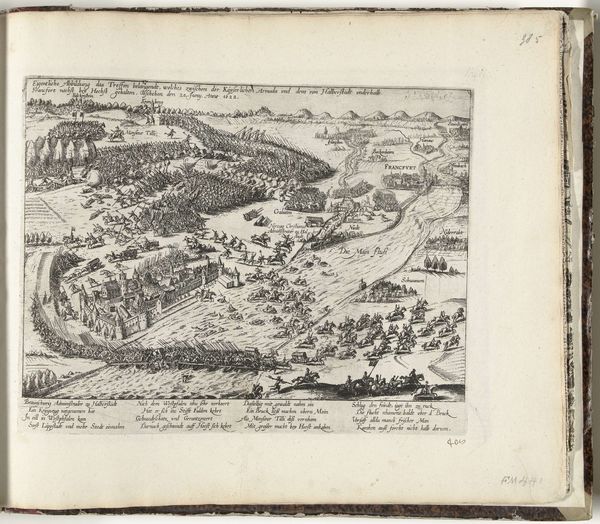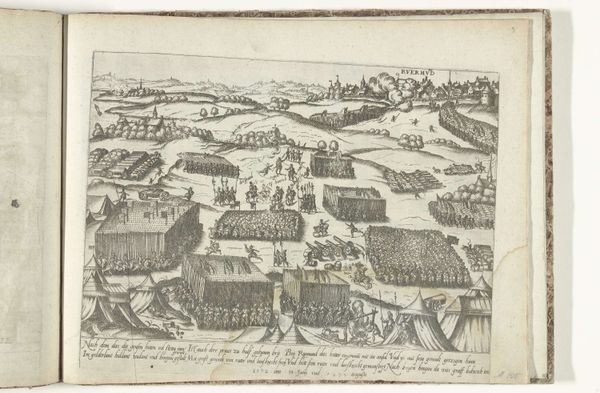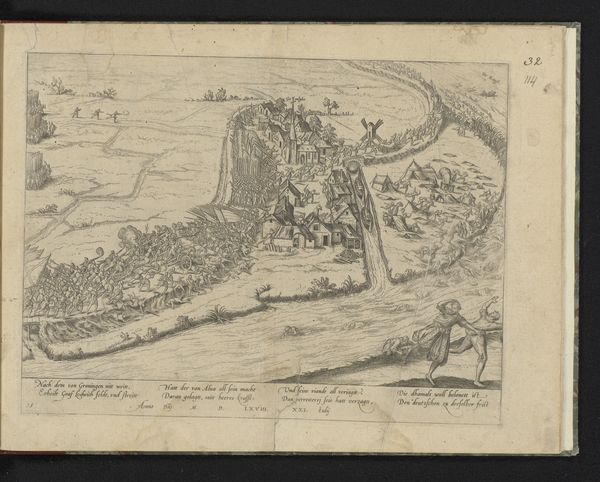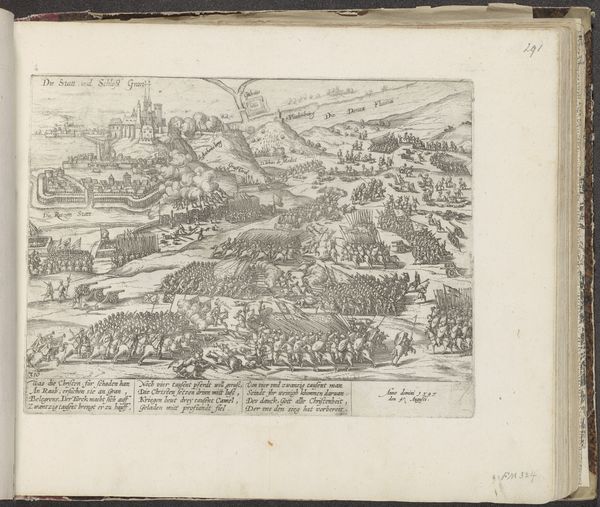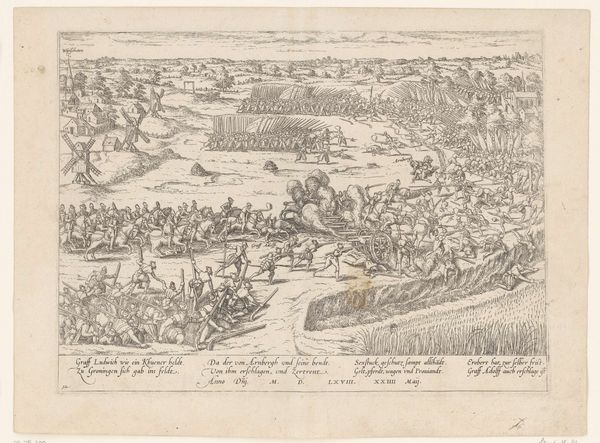
print, engraving
#
pen drawing
# print
#
landscape
#
mannerism
#
history-painting
#
engraving
Dimensions: height 217 mm, width 286 mm
Copyright: Rijks Museum: Open Domain
Curator: Frans Hogenberg created this engraving titled "Lodewijk van Nassau verlaat Bergen, 1572" somewhere between 1572 and 1574. It's currently held here at the Rijksmuseum. Editor: My immediate impression is one of controlled chaos. So much is happening in this small frame. It's intricate but feels a bit overwhelming. Curator: It does, doesn’t it? Hogenberg masterfully captured a pivotal moment in the Eighty Years’ War. Look at the detailed depiction of Lodewijk's forces leaving Bergen. Each little figure and element contribute to a much larger historical narrative about the conflict. Editor: I notice the repeated use of horses and carriages—they form serpentine shapes that move through the landscape. Are those meant to be symbolic of power, movement, or maybe even disruption? And are the fortifications meant to represent impenetrability? Curator: Precisely! Horses were very often understood as vehicles of power. As for the walls, you’re right again; they are laden with intended symbolism. Fortifications and military maneuvers shown in the engraving weren't just documentation, but functioned as visual propaganda, shaping public opinion in the conflict by symbolizing what could and couldn't be overcome. Editor: It’s amazing to consider how detailed a single print could be back then. Look at all the soldiers, horses, and their weaponry – but all done using very economic means. What symbols! Curator: And Hogenberg doesn't shy away from portraying both sides, adding a layer of complexity, offering multiple points of identification. This speaks to the role of art in early modern Europe as a vehicle for political discourse. It’s important to think about not just how but where these images circulated: What did it mean to view them in civic spaces? How might viewing history in this way contribute to the formation of public thought and action? Editor: The level of planning to represent such political conflict is pretty fascinating! This single print functions as a signpost toward very elaborate cultural, historic, and symbolic roots. Curator: Indeed. It really emphasizes the complexities involved when image-making participates so directly in the creation and recording of historical events.
Comments
No comments
Be the first to comment and join the conversation on the ultimate creative platform.
